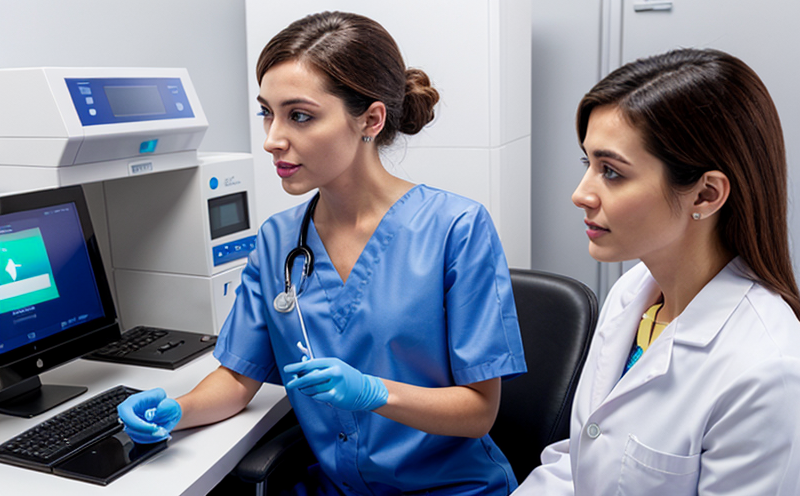DNA-based Detection of GM Rice Contamination
The advent of genetically modified (GM) rice has significantly transformed agricultural practices and food security. However, ensuring that consumer products remain free from unintended GM contaminants is a critical responsibility for regulatory bodies, quality managers, compliance officers, and R&D engineers alike. DNA-based detection methods are at the forefront of this challenge, offering precise and reliable ways to identify and quantify GM contamination in rice samples.
Our service focuses on detecting the presence and levels of genetically modified rice using advanced DNA-based techniques such as polymerase chain reaction (PCR) and real-time quantitative PCR (qPCR). This approach allows for highly sensitive and accurate identification, even at trace levels. The process involves extracting genomic DNA from suspected samples, amplifying specific genetic markers associated with GM rice, and then quantifying the presence of these markers.
Our state-of-the-art laboratory uses international standards like ISO 17025 for method validation and accuracy. This ensures that our results are reliable and can be trusted by stakeholders in both public health and regulatory domains. The service also caters to R&D engineers who need precise data on the genetic modification levels, aiding in product development and quality assurance.
In terms of specimen preparation, rice samples undergo thorough cleaning and extraction procedures that minimize contamination from non-GM sources. This meticulous approach ensures accurate results, which is crucial for maintaining consumer confidence and compliance with international guidelines such as those set by the Codex Alimentarius Commission (CAC).
The detection method we employ is based on specific primers designed to target unique genetic sequences found in GM rice varieties. These primers are chosen based on thorough research, ensuring that they do not cross-react with non-target species or other common rice varieties. The PCR process involves multiple cycles of denaturation, annealing, and extension, allowing for exponential amplification of the target DNA sequence.
The real-time qPCR technique provides quantitative data by measuring fluorescence during each cycle, which allows us to calculate the exact amount of GM material present in the sample. This level of precision is essential for regulatory bodies that need accurate thresholds to enforce labeling laws or ban certain products if contamination exceeds acceptable limits.
- Industry Applications: Our service plays a crucial role in ensuring compliance with international standards and guidelines, such as those set by the Codex Alimentarius Commission (CAC), which require rigorous testing of GM content in food products. It also supports R&D teams in developing non-GM alternatives.
- Competitive Advantage: By providing accurate and rapid detection results, our service enhances a company's reputation for quality and safety. It allows businesses to stay ahead of regulatory changes and market demands, ensuring they remain compliant and competitive in the global market.
Why It Matters
The importance of detecting GM rice contamination cannot be overstated. In a world where genetically modified crops are increasingly common, there is growing concern about unintended contamination and its potential impacts on health and the environment. Consumers have become more aware and demanding regarding food safety and origin.
Our service helps to maintain the integrity of non-GM rice products by providing clear evidence of GM content. This transparency builds trust with consumers who are increasingly concerned about what they eat. For regulatory bodies, accurate testing ensures that laws against unauthorized GMOs are enforced effectively, protecting public health and supporting sustainable agricultural practices.
The detection of GM contamination is also essential for maintaining market integrity in the rice industry. Consumers expect to receive what they pay for, and any suspicion or discovery of unintended GM contamination can lead to significant financial losses due to product recalls or lost consumer trust.
Industry Applications
- Retailers: Ensuring that products sold in stores are free from unauthorized GM rice is crucial for maintaining consumer confidence and complying with labeling laws.
- Distributors: Distributors play a vital role in the supply chain, and accurate testing helps them to verify the authenticity of their products, ensuring they meet the expectations of retailers and consumers.
- R&D Engineers: Our service assists R&D teams in developing non-GM alternatives or improving existing processes for GM-free products.
The service is particularly valuable for those involved in quality control, ensuring that every batch of rice meets the highest standards. For procurement departments, accurate testing helps to identify and avoid suppliers who may inadvertently introduce contaminated product lines into their supply chains.
Competitive Advantage and Market Impact
- Enhanced Reputation: By demonstrating a commitment to quality and safety, our service helps businesses build a strong reputation in the market. This is especially important for companies looking to expand their international presence.
- Avoidance of Legal Issues: Accurate testing reduces the risk of legal action due to unauthorized GM content in products, which can lead to costly recalls and damage to brand image.
The ability to accurately detect and report on GM rice contamination provides a competitive edge. Companies that invest in our service are better positioned to meet changing consumer preferences and regulatory requirements. This service ensures that businesses remain compliant with international standards, thereby avoiding potential fines or other penalties associated with non-compliance.





